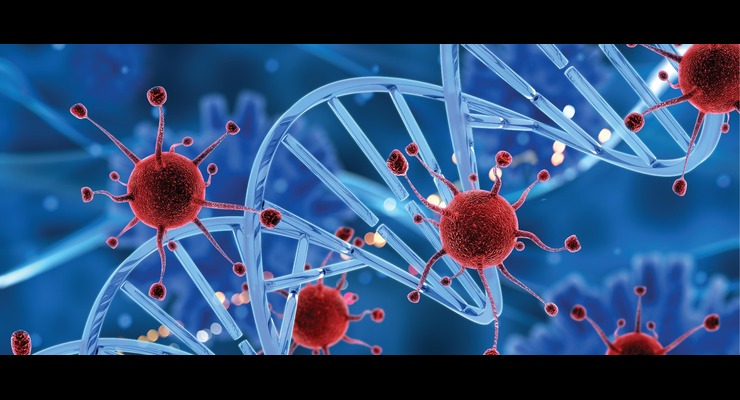Cancer, a word that strikes fear into the hearts of millions, has emerged as a formidable global health challenge in the 21st century, with India increasingly labeled as the "cancer capital of the world."
This blog post dives deep into the multifaceted dimensions of cancer—its definition, types, and global rise—while exploring why it affects individuals from childhood to old age and remains largely non-curable.
We will examine the devastating financial and emotional toll cancer takes on families, analyze why India has become a hotspot for this disease despite its low-economic status, identify the key factors driving cancer prevalence, and critically assess the Indian government’s efforts to provide facilities for cancer patients. Additionally, we’ll highlight the need for palliative care, the intersection of cancer with mental health and disability, and propose systemic reforms to address this escalating crisis.
Understanding Cancer: Definition and Types
Cancer is a generic term encompassing a large group of diseases characterized by the uncontrolled growth of abnormal cells that invade and destroy healthy tissues, often metastasizing to other parts of the body. This process, driven by genetic mutations, disrupts normal cellular functions, leading to malignant tumors or neoplasms.
According to the World Health Organization (WHO), cancer is the second leading cause of death globally, claiming 9.6 million lives in 2018, or 1 in 6 deaths. In India, the Indian Council of Medical Research (ICMR) estimated 1.45 million new cases in 2016, a number projected to double by 2035.
There are over 100 types of cancer, each classified by the organ or tissue it originates in. The most common types globally and in India include:
- Lung Cancer: Predominant in men, often linked to tobacco use, with a median diagnosis age of 59 in India—much younger than the U.S. (70), China (68), or U.K. (75).
- Breast Cancer: The leading cancer among Indian women, affecting 1 in 28 women, with urban areas reporting 1 in 22 cases compared to 1 in 60 in rural regions.
- Cervical Cancer: The second most common cancer in Indian women, accounting for 22.86% of female cancer cases, largely due to HPV infections.
- Oral Cancer: The most prevalent cancer among Indian men (11.28% of cases), driven by widespread tobacco chewing, with 80% of cases directly attributable to tobacco.
- Stomach, Colorectal, and Esophageal Cancers: Significant contributors to cancer burden, often linked to dietary habits and infections like Helicobacter pylori.
- Childhood Cancers: Leukemias, brain tumors, and lymphomas dominate, with 9,620 new cases expected in the U.S. in 2024 for ages 0-14, a trend mirrored in India.
Cancer in the 21st Century: A Trending Global Disease
Cancer has become a trending global disease in the 21st century, propelled by demographic shifts, lifestyle changes, and environmental factors.
Globally, the cancer burden is projected to double over the next 20-40 years, with low- and middle-income countries like India bearing the brunt—70% of cancer deaths occur in these regions.
In India, cancer incidence is expected to rise from 1.39 million in 2020 to 1.57 million by 2025, a 12.8% increase, surpassing global averages. This escalation is driven by:
- Aging Populations: Improved life expectancy means more individuals reach ages where cancer risk peaks (50-64 years in India).
- Lifestyle Shifts: The adoption of Western diets high in processed foods, physical inactivity (obesity rates rose from 9% in 2016 to 20% in 2023 in India), and increased alcohol consumption contribute to 10% of cases.
- Tobacco Use: Globally, 50% of men in developing countries smoke, with India being a major hub—2,500 deaths daily are tobacco-related, accounting for 1 in 5 male and 1 in 20 female deaths.
- Environmental Factors: Air pollution, a significant risk for lung cancer, and carcinogenic infections like HPV and hepatitis B/C (responsible for 30% of cases in low-income countries) exacerbate the burden.
- Socioeconomic Transitions: Reduced mortality from infectious diseases has shifted focus to non-communicable diseases (NCDs), with cancer accounting for 8.3% of deaths and 5% of DALYs in India in 2016, doubling since 1990.
Cancer Across the Lifespan: From Kids to Old Age
Cancer’s reach spans all ages, driven by a combination of genetic, environmental, and lifestyle factors:
- Childhood (0-14 Years): In the U.S., 9,620 new cases are expected in 2024, with leukemias (e.g., acute lymphoblastic leukemia) and brain tumors leading. In India, similar patterns exist, with 8-10% of cases linked to inherited mutations like those causing retinoblastoma. Late effects of treatment, such as growth issues or secondary cancers, are a concern for survivors.
- Young Adults (15-39 Years): Cancers like breast, cervical, and oral cancer emerge, often linked to HPV (cervical) or tobacco (oral). The median age for lung cancer in India (59) is younger than in Western nations, reflecting early exposure to risk factors.
- Middle Age (40-64 Years): Incidence peaks as cumulative exposure to carcinogens—smoking, poor diet, pollution—takes its toll. Breast cancer in women and lung/oral cancer in men dominate in India.
- Elderly (65+ Years): The incidence rises dramatically due to a buildup of genetic mutations and declining cellular repair mechanisms. In India, the elderly population (projected at 140 million by 2026) faces increased risk, with 60% lacking family support due to urbanization.
The development across ages is fueled by cumulative risk exposure, genetic predispositions (e.g., familial adenomatous polyposis), and environmental carcinogens like UV rays, tobacco smoke, and HPV, which alter DNA over time.
Why Cancer Remains Largely Non-Curable
Despite advances, cancer often remains non-curable due to its complexity:
- Late Diagnosis: In India, 75-80% of patients are diagnosed at Stage 3-4, when the disease has metastasized, reducing survival rates. Low awareness, lack of screening, and stigma delay presentation.
- Biological Complexity: Cancer cells acquire unique DNA changes as they divide, making each tumor heterogeneous. Two cells in the same tumor can have different mutations, complicating treatment.
- Treatment Resistance: Cancer cells develop resistance to therapies like chemotherapy, often due to genetic mutations or fusion proteins, particularly in childhood cancers.
- Recurrence and Metastasis: Even after treatment, cancer can recur or spread, as seen in 90% of lung cancer cases in India diagnosed at advanced stages.
- Limited Access to Care: In low-income countries, only 30% of children survive cancer compared to 80% in high-income nations, due to inadequate diagnostic and treatment facilities.
While early detection and treatments like surgery, chemotherapy, and radiotherapy can cure some cancers (e.g., early-stage breast cancer), the non-curability of advanced cases underscores the need for prevention and palliative care.
The Devastating Impact of Cancer on Families: Financial and Emotional Toll
Cancer doesn’t just attack the body—it breaks the backbone of families, both financially and emotionally:
- Financial Catastrophe: Treatment costs in India are three times higher than for other NCDs, with a single hospitalization exceeding the annual expenditure of 80% of the population in 2017 (up from 60% in 2014). Out-of-pocket expenses push 25% of rural and 30% of urban slum households into poverty, with 45% taking high-interest loans (24-36%) and 30% selling assets. In rural areas, non-medical costs (travel, lodging) add to the burden, with 40% of families facing bankruptcy.
- Emotional Devastation: The loss of a loved one to cancer—8 lakh deaths annually in India—leaves families grappling with grief, often compounded by prolonged caregiving stress. For survivors, late effects like infertility or cognitive impairment (in children) strain familial bonds.
- Social Isolation: The stigma associated with cancer, especially in rural India (69% of the population), leads to social exclusion, with 50% of elderly patients reporting isolation due to lack of family support.
- Intergenerational Impact: Children drop out of school (15% rate post-diagnosis), and women enter the workforce (20% increase in rural areas) to offset costs, perpetuating poverty cycles.
India as a Cancer Hotspot: Why a Low-Economic Country Bears the Brunt
India’s designation as the "cancer capital of the world" stems from a confluence of factors:
- High Incidence Rates: With 1.57 million cases projected by 2025, India ranks third globally in cancer incidence after China and the U.S., with a 12.8% rise since 2020. States like Uttar Pradesh (2.10 lakh cases in 2023) and Aizawl (269.4 per 100,000) report the highest rates.
- Economic Constraints: Despite a low GDP per capita ($2,389 in 2023), India faces a cancer burden costing 0.4% of GDP ($11 billion in 2020), projected to rise to $36-40 billion by 2030 due to increased mortality and life expectancy.
- Late Diagnosis: 75-80% of cases are diagnosed at advanced stages due to low awareness (only 43% of Indians are concerned about cancer vs. 58% globally), lack of screening (less than 5% coverage), and vast distances to tertiary centers.
- Regional Disparities: The Northeast (e.g., Papumpare, 219.8 per 100,000 for females) lacks specialized facilities, forcing patients to travel for care, while urban areas see higher breast cancer rates due to lifestyle factors.
- Younger Onset: Cancers like lung cancer strike at younger ages (median 59 vs. 70 in the U.S.), reflecting early exposure to tobacco and pollution.
Factors Responsible for Cancer Generation in India
The surge in cancer cases is driven by a mix of modifiable and non-modifiable factors:
- Tobacco Use: 40% of cases are tobacco-related, with 2,500 daily deaths linked to smoking and chewing. India is the second-largest tobacco consumer globally, with 930,000 deaths in 2010.
- Diet and Lifestyle: Poor diets low in fruits and vegetables, rising obesity (20% in 2023), and physical inactivity contribute to 10% of cases, particularly colorectal and breast cancers.
- Infections: HPV and hepatitis B/C cause 30% of cases, with cervical cancer (12% of all cancers) linked to HPV, and liver cancer tied to hepatitis.
- Environmental Pollution: Air pollution, a major lung cancer risk, is rampant, with India having 14 of the world’s 20 most polluted cities (WHO, 2023).
- Genetic Diversity: India’s 4,000 anthropologically distinct groups exhibit unique genetic polymorphisms, increasing susceptibility to certain cancers (e.g., EGFR mutations in lung cancer).
- Socioeconomic Barriers: Poverty, low literacy, and cultural stigma delay diagnosis, while rural-urban disparities limit access to care.
Government Efforts: Are They Doing Enough for Cancer Patients?
The Indian government has implemented several initiatives to address the cancer burden, but their effectiveness is questionable:
- Ayushman Bharat (AB-PMJAY): Provides up to ₹5 lakh per family annually for secondary and tertiary care, covering cancer treatment. However, only 27 Regional Cancer Centres (RCCs) are included, leaving rural patients underserved.
- Rashtriya Arogya Nidhi (RAN): Offers financial aid for poor patients at RCCs, but bureaucratic delays and limited awareness restrict access.
- Tata Memorial and Kidwai Institute: Treat 60-70% of patients at minimal or no cost, but capacity is limited, with long waiting times (3-6 months for appointments).
- National Programme for Prevention and Control of Cancer (NPCDCS): Focuses on screening for breast, cervical, and oral cancers, but coverage is dismal—less than 5% of the population is screened, compared to global peers.
- Infrastructure Gaps: Only 1 hospital bed per 1,833 people exists (vs. WHO’s 3.5 per 1,000), with 60% of PHCs lacking X-ray machines and 70% of doctors urban-based, leaving rural 65% with 1 doctor per 10,000.
- Medicine Shortages: 70% of essential drugs are out of stock for 6-12 months annually in public facilities, forcing patients to private pharmacies at 200-300% markups.
Despite these efforts, the government’s response falls short. Public health spending is a mere 1.28% of GDP, corruption siphons 30% of funds, and urban bias (80% spending on 35% of the population) neglects rural needs. The lack of palliative care units—only 1-2% of rural patients access such services—exacerbates suffering for the 10 million needing end-of-life care annually.
Additional Dimensions: Palliative Care, Mental Health, and Disability
- Palliative Care Neglect: With 90% of terminal patients lacking opioid access due to regulatory barriers, palliative care remains underfunded. A national policy could train 50,000 health workers and establish 1,000 units, costing ₹500-₹1,000 per patient monthly vs. ₹10,000-₹50,000 for hospital stays, saving 70-80% in public expenditure.
- Mental Health Crisis: Cancer patients and families face severe emotional distress—1 in 10 Indians struggles with depression, with rates doubling post-diagnosis. The 150 million mental health patients in India, including cancer survivors, lack support, with only 4,000 psychiatrists available.
- Disability Burden: Cancer survivors often face disabilities (e.g., amputations, vision loss), with 26 million disabled in India. Only 5% access aid, and 80% lack accessible infrastructure, necessitating ₹3,000-₹5,000 monthly aid and 10,000 accessible public spaces by 2030.
A Roadmap for Reform: Beyond the Status Quo
India’s cancer crisis demands a radical overhaul:
- Increase Health Spending: Raise public health expenditure to 5% of GDP, ensuring 100% NHM fund release on time.
- Expand Screening and Awareness: Achieve 50% screening coverage by 2030, focusing on rural areas, and launch nationwide campaigns to combat stigma (only 43% are concerned about cancer).
- Palliative Care Policy: Provide ₹5,000-₹10,000 monthly to terminal patients, subsidize morphine, and integrate palliative care into primary health centers.
- Mental Health Support: Train 10,000 counselors and establish telepsychiatry units to address the 30% suicide rate linked to untreated mental health.
- Tobacco Control: Enforce stricter tobacco regulations, given its 40% contribution to cancer cases, and ban chewing tobacco outright.
- Genetic Research: Leverage India’s genetic diversity for cancer genomics studies, tailoring treatments to regional epidemiology.
Conclusion: Reclaiming Lives from the Cancer Capital
India’s designation as the cancer capital is a clarion call for action. With 1.57 million cases projected by 2025, the disease’s toll—from financial ruin to emotional devastation—threatens the nation’s fabric. While the government’s initiatives like Ayushman Bharat offer a start, systemic failures—low funding, corruption, and rural neglect—leave millions vulnerable. By prioritizing prevention, early detection, palliative care, and mental health support, India can mitigate this silent epidemic. The fight against cancer is not just medical—it’s a societal imperative to restore dignity and hope.

 Sangram Keshari
Sangram Keshari









